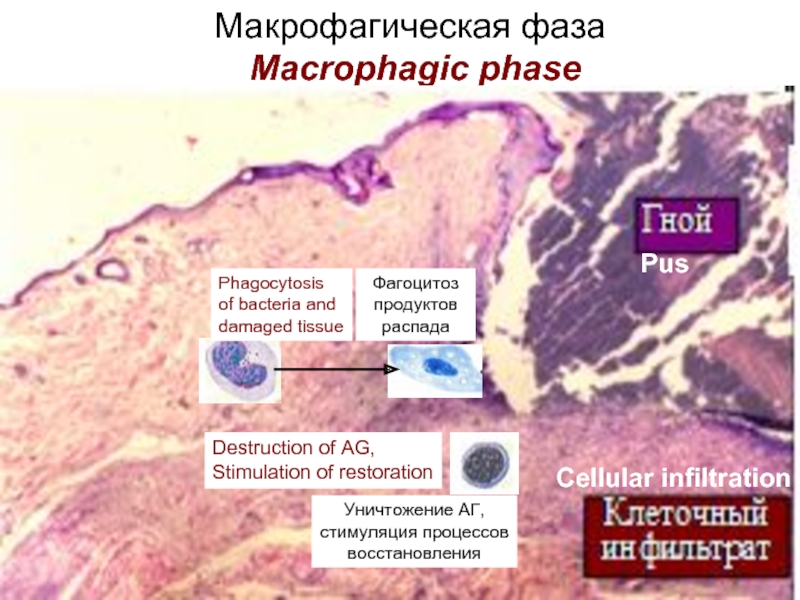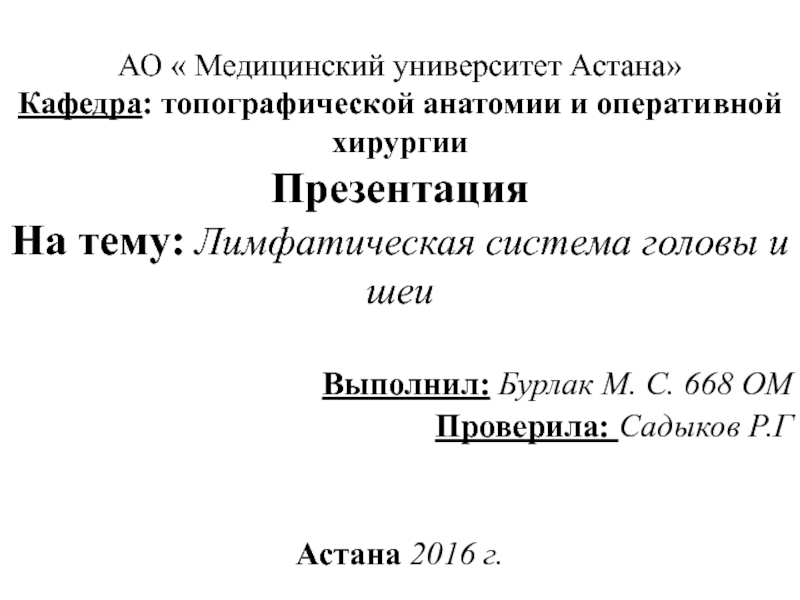At damage of a tissue labrocytes react the first and throw out the granules in tissue,
histamin increases permeability of capillaries for blood plasma and leukocytes.
Plasma collects in a tissue and creates an inflammatory oedema which separates
the inflammatory focus from healthy tissues and does not allow to extend to products
of disintegration on an organism.
Neutrophils come the first to the center of damage. They throw out in a tissue much
oxygen superoxide, lysosomal enzyms and contents of specific granules, and then
perish. Oxygen superoxide and lysocim destroy bacteria, cation-proteins increase an
oedema, and lysosomal enzymes even more destroy the damaged tissue. This phase
of an inflammation refers to leucocytic (or the sharp period).
Then the macrophagic phase develops. Macrophages come to the center of damage
and phagocyte bacteria and products of disintegration of tissue, completely clearing
from them the inflammatory focus.
The fibroblastic (reparative) phase begins. Fibroblasts are actively made multiple
copies, form around of the cleared site of damage a fibroblastic capsule and secrete of
fundamantal substance and collagen of 1 type of which at once form thick fibres, filling
with them defect of a tissue. Vessels grow into a capsule, the granulation tissue is
formed of thick, rough collagenic fibres and vessels. Within the next 6 months rough
scar is gradually reconstructed, thick fibres from collagen of 1 type are replaced with
more thin fibres from collagen 3 types














